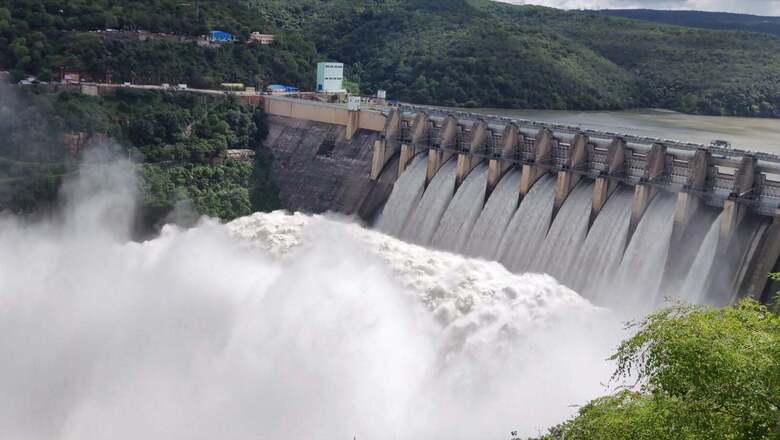
views
Hydropower plants are susceptible to weather extremes, especially those in the sensitive region of the Himalayas. But as climate warms, most of the dam operations are also likely to face increased risk of heavy inflows and flooding and would require robust warnings, shows a new research.
The study led by researchers from Indian Institute of Technology (IIT), Gandhinagar, analysed the future climate risks of at least 46 of the big hydropower plants (more than 25 MW) situated across 13 river basins of the country.
The team found that each of the power plants is expected to experience varying levels of challenges in reservoir monitoring, as a warming climate leads to high rainfall events. Not only will there be a high frequency of high inflow events for most hydropower dams, but frequency of high reservoir storage would also go up.
“India has huge hydropower potential. But we have to be careful and aware of the risks involved. We need to relook at the traditional practice of storing more water in the reservoirs, because there are increased risks of sudden heavy inflows in some of these dams,” said one of the authors, Professor Vimal Mishra, from IIT Gandhinagar, adding that the impact may not be uniform across all dams and would require timely warnings.
High Rainfall Events, Sudden Extreme Inflows
The team used observations and climate projections to show the hydro-climatic changes in the upstream catchments as well as their implications for the hydropower generation of 46 major hydropower dams in India.
They found that a warmer (up to 5.0 ºC) and wetter projected climate with a substantial increase (5.0-33%) in precipitation will lead to an increased (7-70%) inflow to reservoirs of major dams. The data points to higher rainfall in most catchments upstream of the dams in the projected climate.
While an upside of the increased inflow would mean high reservoir storage conditions for most dams and high hydropower potential, this would also impose difficulties in the management of reservoirs for flood control, hydropower production, and water supply, the study warns.
Among all regions, north and central India are projected to receive a higher increase in precipitation than southern India. The latest peer-reviewed research adds to the many global studies that have warned of changes in stream flow variability across the major global river basins due to a warming climate.
Monsoon Woes, Flood Risks Downstream
“The challenges for reservoir operations primarily arise during the peak monsoon season (July-August), when reservoirs are full and cannot accommodate the high inflow, after a considerable decline in storage in the pre-monsoon season to meet the irrigation demands. The increased water availability during such events can pose challenges for controlling flooding in downstream regions,” Mishra told News18.
In the absence of reliable early warning and forecast systems, high inflow when reservoirs have already reached their total capacity may require quick release, causing the sudden opening of the dam gates and flooding in the downstream low-lying areas. The Kerala floods of 2018 were one such event triggered by reservoir storage.
According to the study, there will be other factors like land use/land cover change and construction of new reservoirs upstream of the existing hydropower dams which would continue to impact river flow regimes and sediment load to the reservoirs, and influence hydropower potential in the future. However, the need now is to urgently look at considerable adaptation measures that would be needed to tackle the extremes in the future.
Read all the Latest India News here




















Comments
0 comment